Rice is the main food for 2/3 of the world. Which kind is best? Check out this nutrition comparison! It’s all about minerals lost in processing white rice. It turns out dark red and black rice are not only tastier, they also provide complete minerals. The only requirement is that rice must be properly cultivated, hulled, soaked, and sprouted. Better quality precision hulling machines don’t strip away the dark coating containing the nutrients. Good-bye disease!
Red Rice has 5x the Nutrients of Polished White Rice!
The Takeaway:
- Mineral Deficiency is a major cause of disease. Industrial chemicals, lost rice varieties, over-polishing, and indigestible lectins cause illness.
- Anatomy of Rice. Why polish and throw away the most valuable part?
- Of 90,000 types of rice, we only know a few varieties: white, brown, black, and red.
- Sprouting rice removes the indigestible lectins> It’s easier to digest, higher in protein.
- Complete Minerals in dark red and black rice sustain good health, and the flavor is yummy!
- Dark colored rice is especially high in specific disease-preventing anti-oxidants and minerals. Read this list!
- Rice is ancient. Our ancestors gathered it 100,000 years ago.
- How to eliminate arsenic in rice? Eat organic! Much is from Monsanto’s glyphosate chemical.
- The Recipe: How to prepare the most flavorful, nutritious rice: Sprouted Pigmented Rice!
- Conclusion: Dark Sprouted Rice is a Paleo superfood, so everyone wins.
1. Mineral Deficiency is a major cause of disease.
As I write this blog, half of my family members suffer from diabetes. Diabetes is the world’s 21st century disease, with roughly 10% of adults, a staggering 463 million people living with it. Why is that? That’s what this article is about. Here are the four primary factors responsible for most of the disease and malnutrition in the world. The solutions are within our reach.
- Industrial chemicals like glyphosate use high levels of arsenic and heavy metals to accumulate in seeds.
Solution: Use natural chemical-free cultivation methods. - We have forgotten many types of indigenous seeds, especially dark ones, the highest in nutrients.
Solution: Learn to enjoy many types of dark colored rice. - Polished grains are low in nutritional content, high in sugar, simple carbs. Modern methods to remove the rice hull also take away the outer layers of bran land germ, thus depleting rice of its precious nutrients. White polished rice is often seen as superior, quicker to cook, and easy to digest. However its high sugar level and low micronutrients have brought us diabetes, malnutrition, and many sugar-related maladies.
Solution: Use a precise rice huller that removes only the thick outer hull, not the nutritious bran and germ. - Many people suffer indigestion and constipation from unpolished rice due to lectins, natural non-digestible coatings in seeds. For this reason many people prefer white rice. Doctors often recommend polished white rice for easier nutrition.
Solution: Soak dark unpolished rice 12-24 hours to rinse away these natural coatings, to make the rice quicker to cook, easy to digest, and far higher in nutrients.
2. Anatomy of Rice
Every grain of rice contains a Hull, Bran, Inner Endosperm, and Germ.
Every grain of rice grain is enclosed in a tough hull. Under the hull are several thin layers of different tissues, collectively known as the bran layer, which forms 5% to 8% of the weight. At the base of the grain is the embryo (or germ). The inner part of the seed is a starchy endosperm.
The initial milling process removes the hull or husk (about 20% of grain weight), resulting in rice with its bran layer intact. This is ‘brown’ or ‘unpolished’ rice, which can be directly cooked and eaten. Or it can be further milled or polished to remove the bran layer to create ‘white’ or ‘polished’ rice. All varieties of rice can be processed after harvest to obtain either white/polished or brown/unpolished rice. Good news – if you’re on a gluten-free diet, all rice is naturally gluten-free.
3. Types of Rice
White Rice
This is rice in which the hull, bran, and germ have been removed. It is polished to make it white. The modern diet is high in simple sugars, empty carbs. Our most common foods are bread, pasta, white rice, cookies, snacks. There are more than 40,000 varieties rice cultivated, and over 90,000 species known.
White rice is the most popular form of rice, however it is known to increase the risk of diabetes. When brown rice is polished it becomes white rice. This removes roughly 80% of the thiamine, 50% of the zinc, 78% of the magnesium, half the potassium, and 83% of the fiber. The neutral flavor of white rice is preferred considered superior in many rice-consuming countries. Although white rice is non-toxic, hypo-allergenic, and gluten free, it is definitely not a whole food.
Harvard researchers recently analyzed the results of four studies: two in Asian countries (China and Japan) and two in Western countries (USA and Australia). All participants were diabetes free at study baseline. A significant trend was found in both Asian and Western people with a stronger association found in women than men. The more white rice eaten, the higher the risk of type 2 diabetes. Every additional serving of white rice contributed to a significant increase in the risk of type 2 diabetes.
Polished white rice is a processed food, after removal of the bran and germ, hence it can never sprout. White rice is high in simple carbs, sugars, low in nutrients and life force,
Thus it requires eating more and more white rice to feel a sense of satiety.
Brown rice
Brown rice is whole-grain rice in which the outer hull is removed. It contains many vitamins, minerals and fiber in the bran layer, thus it is rich in complex carbs. Even a small amount gives a sense of satisfaction and fullness without weight gain. Brown rice tastes nuttier and chewier than white rice. Brown rice is not as popular because it takes longer to cook, requires more fuel, and may cause digestive disturbances. Research shows that consuming whole grains over refined grains improves health.
Brown rice contains higher fiber and protein, promoting feelings of fullness that can help maintain a healthy weight. Brown rice won’t spike your blood glucose, hence it help regulate blood sugar and insulin. A recent study in 15 overweight adults showed that those who ate 7 ounces (200 grams) of brown rice for 5 days had significantly lower fasting blood sugar and insulin levels than those who consumed the same amount of white rice. As a result, brown rice may be a better choice for those with diabetes.
Black rice
Black rice is sometimes called forbidden rice, as it’s said to have been reserved for royalty in ancient China. Black rice varieties are popular in Indonesia, Thailand and the Philippines. Black rice is particularly rich in anthocyanins, a group of dark flavonoid plant pigments with powerful antioxidant and anti-inflammatory properties that are also present in berries. Antioxidants protect cells from free-radical damage, and black rice has the highest anthocyanins of any rice.
Anthocyanins have been shown to have potent anticancer properties as well. Population studies suggest that higher consumption of anthocyanin-rich foods is associated with a lower risk of certain cancers and can effectively suppresse the growth and spread of cancer cells.
Red rice
Red rice has a rich nutty flavor. It is deeply pigmented and contains an impressive array of nutrients. Red rice is grown in mountain areas such as Bhutan, Indonesia, and Madagascar. Unpolished red rice is packed with flavonoid antioxidants, including the anthocyanins apigenin, myricetin, and quercetin.
In Bhutan, local folks prefer half-milled red rice that is polished down to a light pink color, which is fluffier, but lower in nutrients. This is done with a one-step polishing machine to make half-polished rice (HPR). Half polishing makes red rice easier to digest and quicker to cook but reduces its nutrition profile as much as 54%. Most consumers not accustomed to the chewy quality of unpolished rice, prefer HPR as a halfway solution. I and a few other stalwart souls prefer high flavor, suprior nutrition, and disease prevention, so for us minimal processing is the obvious choice.
4. Sprouted Rice: More Digestible, Higher Protein
Sprouted brown rice is rice that has been soaked, sprouted, and sometimes dried. Also called Germinated brown rice (GBR), it is considered a whole food because only the outermost layer, the hull has been removed, leaving its nutritional value intact.
Most people think of brown rice as “healthy”, because it is a whole grain, containing the bran layers and the germ. Bran is the key layer where the nutrients (vitamins and minerals and even fiber) are found. However unfortunately, the outer layer of bran also contains Phytic Acid. Phytic Acid essentially binds the nutrients and makes them unavailable for your body to use. Maybe this is Mother Nature’s sneaky way of propagating herself, inviting you to eat a whole seed, pass it through the digestive tract without damage, and defecate it in a pile of perfect fertilizer. Well, just sayin’. It seems to work.
Phytic acid makes brown rice harder to digest. White rice has no Phytic acid, which has been polished away with the bran layers. Therefore white rice digests much more quickly and easily, because it is primarily simple carb, converts quickly to sugar, and doesn’t contain indigestible Phytic Acid. But white rice doesn’t have the nutritious bran, so it is lacking in healthy nutrients. Some consumers see white rice as a nutritious food. However I do not agree, I see white rice as over-processed empty calories.
To make sprouted brown rice, soak it in water at 30 °C for 3 hours and drain into an inverted jar to allow it to germinate for 21 hours. This method optimizes the protein content. Called GABA rice, it is high in the amino acit gamma-aminobutyric acid (GABA). The resulting high-nutrient rice is called Gaba Brown Rice (GBR). GBR balances blood sugar, boosts the immune system, lowers blood pressure, inhibits development of cancer cells and assists the treatment of anxiety disorders. Germination and GBR have the potential to preserve all nutrients in the rice grain and to create the highest value from rice.
Unlike cattle and herbivores, man has only one stomach and a much shorter intestine. These features make him less well adapted to a diet high in grains—unless he prepares them properly. When grains are properly prepared through soaking, sprouting or sour leavening, the friendly bacteria of the microscopic world do the work for us.
I’ll disregard the well-meaning advice of nutritionists, who advise us to consume whole grains rather than refined foods. This advice can be misleading and harmful, for while our ancestors ate whole grains, they did not prepare them hastily. Our ancestors, and virtually all pre-industrialized peoples, soaked or fermented their grains before cooking. Throughout the world grains were soaked overnight, and for as long as several days, in water or soured milk before they were cooked and served.
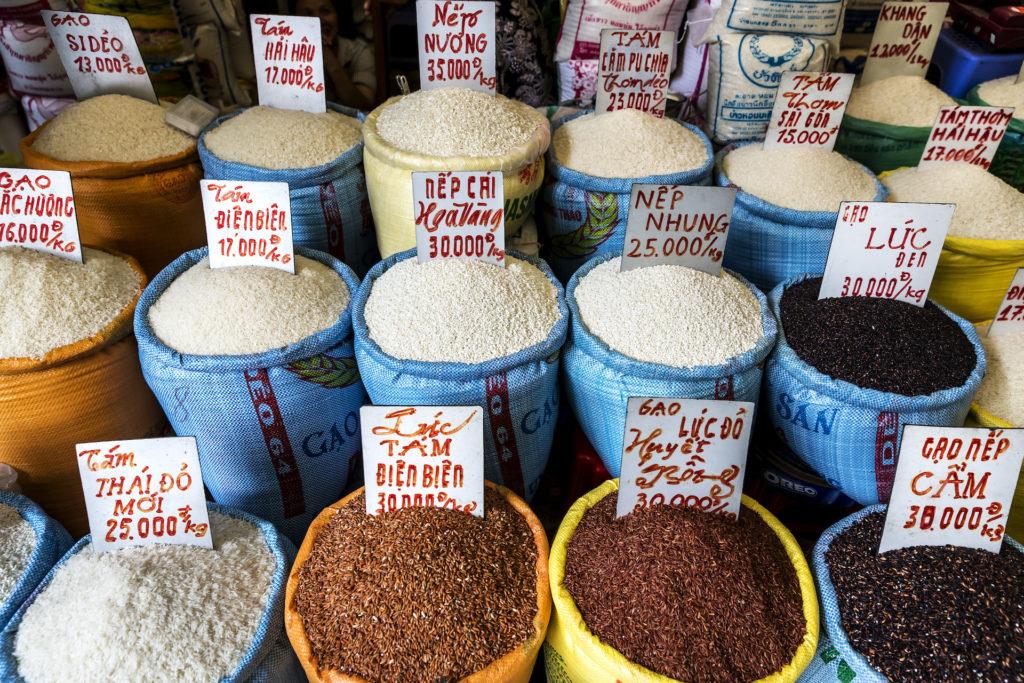
5. Dark Pigmented Rice HIGHEST in Nutrients!
Dark rice varieties are rich in in the anti-oxidant called anthocyanin, a class of natural dark pigments in plants. Highest concentrations of anthocyanin are found in foods like elderberry, chokeberry, black rice, red rice, raspberries, blueberries and purple corn. Anthocyanin can restrict free radicals associated with diabetes, heart disease, and cancer. Black rice anti-oxidant content is said to be six times higher than any other grain, and to reduce inflammation better than any other type of rice. Wow!
Before the beginning of chemical farming, in the so-called “green revolution” of the late 20th century, pigmented rice varieties were abundant. Dark rice of all types was a primary food source for the common people of India, Asia, and Africa. These red and black colored rice varieties contain higher levels of micro-, macro- nutrients and secondary metabolites. Secondary metabolites (SM) are compounds that are not necessary for a plant cell (organism) to live but play a role in the interaction of the cell with its environment, especially with regard to protection against biotic or abiotic stresses.
Because of this strong nutrient profile, dietitians strongly advised pigmented rice for peoples with metabolic disorders including diabetics Black rice contains high levels of Anthocyanin (cyanidin-3-glucoside) which turns the color of the rice to black. The rice kernel bran layer has a towering intensity of beneficial compounds. Many studies have shown that these compounds may be able to improve the cholesterol levels, are anti-inflammatory, anti-cancerous, reduce oxidative stress, help to fight heart disease, and prevent diabetes. In Ayurvedic medicine, black rice is used as a dietary supplement for the treatment of diabetes, cancer, lipid disorders, and gastrointestinal diseases.
Since dark pigmented rice has the bran layer intact, it is generally more nutritious in the same way that brown rice is more nutritious than white rice. In particular, red rice is known to be rich in iron and zinc, while black is especially high in protein, fat and fiber. Studies show that people who consume more antioxidant from Anthocyanin in red, black, or wild rice have reduced risk of metabolic syndrome, depression, certain cancers, and heart disease.
6. Health-Sustaining Mineral Levels in Pigmented Sprouted Rice!
Why am I so excited about the nutritional qualities of dark rice? Because dark pigmented rice is significantly higher in key nutrients that are often deficient or missing in the human diet. We’re talking about significantly increased levels of Anthocyanins, Iron, Zinc, Manganese, Magnesium, Phosphorous, and Potassium in sprouted pigmented rice compared to brown rice.
Anthocyanin: The dark color means it’s Anti-Cancer
Dark pigmented red and black rice are the only varieties that contain the anti-oxidant Anthocyanin. That’s why it’s a powerful anti-cancer food.
Iron: 200% – 400% higher, for healthy oxygenated blood
Iron is vital to the proper function of hemoglobin, to transport oxygen to cells via the blood. A shortage of iron in the blood can lead to a range of serious health problems, fatigue, low cell oxygenation, and accelerated aging. Anemia affects 33% of the world’s population, and about half the cases are due to iron deficiency.
Zinc: 244% – 580% higher, to prevent tuberculosis and malaria
Zinc is a trace element required for a healthy immune system. A lack of zinc can make a person more susceptible to disease. Zinc deficiency is characterized by retarded growth, loss of appetite, low immune function, and diarrhea. Zinc deficiency affects 31% of the world’s population, especially in rice consuming areas of Asia and Africa. Insufficient dietary Zinc is responsible for many lower respiratory tract infections such as tuberculosis, 18% of malaria and 10% of diarrhea. Zinc absorption is inhibited by phytates in unsoaked rice.
Manganese: 157% higher, to prevent diabetes and sugar-related disease
Manganese is a critical mineral that helps reduce inflammation and maintain blood sugar levels. Manganese deficiency causes impaired growth, low reproductive function, skeletal deformities, impaired sugar tolerance, low carbohydrate and fat metabolism.
Magnesium: 129% higher, to prevent diabetes and hypertension
Magnesium is a mineral that’s crucial to the body’s function, to keep blood pressure normal, bones strong, and the heart rhythm steady 75% of adults in the US are believed to be deficient in magnesium, which is associated with osteoporosis, inflammation, heart disease, and diabetes.
Phosphorous: 147% higher, for healthy teeth and bones
Phosphorous helps to build strong teeth, manage how your body stores and uses energy, and filter out waste in your kidneys, repair tissue and cells, to help produce DNA and RNA — the body’s genetic building blocks. Phosphorus deficiency is associated with bone diseases.
Potassium: 217% higher, to prevent high blood pressure and heart disease.
Potassium is one of the most important minerals in the body. It helps regulate fluid balance, blood pressure, muscle contractions and nerve system. It helps regulate mood changes and mental balance. Reduced potassium consumption has been associated with hypertension, heart diseases, and risk of stroke. Hypertension is currently one of the most urgent public health problems globally.
Thiamine, Vitamin B1, for strong nerves, and to prevent beriberi.
Thiamine is a cofactor (a molecular helper) for a number of enzymes in the body responsible for the breaking down of sugars and carbohydrates to release energy for growth, nerve function. It builds the nerve myelin sheath and muscle tone. So it’s not surprising that vitamin B1 deficiency causes beriberi, low energy levels, weak nerves, and muscle wastage.
Calcium, for heathy bones, blood clotting, and healthy muscles.
Copper, for healthy red blood cells, bones, and to prevent osteoporosis.
We’re focusing on nutrition data for four varieties of rice: Brown, Black, White, and Red.
7. The Real History of Rice
Yes, Rice is a Paleolithic Food.
The assumption that prehistoric people didn’t eat grain “is just wrong. It’s misinformed,” says Huw Barton of Britain’s University of Leicester, who studies ancient starch grains. “People ate what they could get their hands on. Eating is surviving.” Paleolithic hunter-gatherers began systematically gathering wild grasses such as rice, wheat, and barley. Eventually they gathered these plants in such large amounts that it influenced how the plants evolved, he says.
Historians have long assumed that plant domestication and farming made its debut some 10,000 years ago. It is widely held that early humans were limited to foraging for fruits, nuts and roots up to 100,000 years ago. Now, cereal grasses are a new addition to our concept of the prehistoric diet. “This broadens the timeline for the use of grass seeds by our species,” says Julio Mercader, an assistant professor at University of Calgary’s Department of Archeology.
Clear new evidence invites us to rethink our assumption that our Paleolithic ancestors fueled up with berries and meat, while passing on grains and grasses. As scientists continue to debate what our ancestors ate, meanwhile a growing number of archaeologists show that ancient people ate just about everything–including high-carb foods sometimes forbidden by Paleo diets.
Wild rice was a central part of the diets of native North American Indians. Ojibwa, Algonquin, Dakota, Winnebago, Sioux, Fox and a tribe called the Menominee, or “Wild Rice People.” Native Americans gathered wild rice by canoe in a traditional method prescribed by tribal law. The rice crop allowed the Ojibwa people to survive incredibly harsh Northeastern winters, the success of which shocked early French explorers.
An African Cave Full of 100,000-Year-Old Grain
Professor Julio Mercader of the University of Calgary found evidence in the Mozambique Ngalue Cave that Homo Sapiens were eating wild grains as early as 100,000 years ago. The discovery is reported in the journal Science, touted as the “earliest direct evidence of humans using pre-domesticated cereals anywhere in the world” in a university press release.
Owen Jarus wrote in Heritage Key, “Scientists have long believed that grains played little role in the Stone Age diet. This belief is fueled by the fact that it’s difficult to process grain using the tools of the time. The cave that Mercader excavated had a layer that was used by people from 105,000 years ago to 42,000 years ago. In it there was a vast number of tools. Mercader took a sample of 70 tools that could be used to prepare Stone Age cereal.
He discovered 2369 grains in the tools! Most of the grain found is an ancient wild sorghum. His conclusion: “Middle Stone Age groups routinely brought starchy plants to their cave sites and that starch granules got attached to and preserved on stone tools.” The long stretch of time of these tools (60,000 years!) suggests that it wasn’t some one-time event precipitated by a famine. It seems to be constant.
An ancient site in Israel yielded a hearty collection of grains dated to 23,000 years ago, according to a 2004 Proceedings of the National Academy of Sciences paper. This early appearance of wild grasses in the human diet would push back the assumed date of grass-seed eating more than 70,000 years.
These recent discoveries indicate our Paleo ancestors ate grains regularly. A paper published in Proceedings of the National Academy of Sciences details discoveries of Paleolithic-era flour residues on 30,000-year-old grinding stones in Italy, Russia and the Czech Republic. The grain residues are mostly wild cattail and wild grasses.
The Italian cave Grotta Paglicci provides evidence that early human survival may have hinged on oat grasses some 33,000 years ago. Inside the cave, archaeologists uncovered a sandstone pestle studded with starch granules from a variety of plant materials, including grains like oats.
Researcher Barton says. “We have found seeds of wild grasses, aquatic plants and root vegetables, all of which have formed part of the hunters’ diet. Especially after an unsuccessful hunt, they had to go out and dig up roots.”
Winnowing rice the old fashioned way using wind.
Centuries of Rice Milling Foretold the Advance of Modern Disease
Luxurious fluffy white rice was once reserved for royalty. The common folk were forced to eat cheaper unprocessed brown rice. After all, just to remove the hull was difficult enough. Gradually new methods were developed, and by about 1700 C.E. when British and Portuguese traders made rice a world commodity, everyone in the world had sparkling clean white rice. Pretty soon no one even knew of the existence of brown rice, let alone black or red rice. These were considered ultra-exotic. With the advent of 20th century electricity and one-step hulling-polishing machines, almost any farm can now do all their own rice processing from seed to table. But as we polished away the most valuable nutrients, what happened to our health?
If rice paddies could speak, they’d tell us that processed white rice is an incomplete food, and that the current wave of diabetes has been coming for hundreds of years. And our methods of milling rice have gradually shifted from labor-intensive pounding to quick and easy machine grinding. The effects of this change on human health has been devastating. The trend from processing by hand to machine polishing has brought with it all the modern chronic diseases that we now face.
Rice is laid out to dry in the sun on my family rice farm in Punakha, Bhutan.
At my family red rice farm, this machine does hulling and half-polishing in one easy step. It separates out the hull and most of the bran, which is used as cattle feed. This produces half milled red rice, which is fluffy and light pink in color.
This one-step machine from India can polish white rice directly, separating the bran, rice, and broken rice. The machine is easy to operate and high efficiency with 2.2kw electric engine and 220v voltage, able to process over 180 kg/hour. See “NANS” BRAND Rice huller with polisher. The compact model is easy to operate and install.
8. Arsenic Levels in Unpolished Rice?
Recent findings show that brown unpolished rice contains arsenic, a toxic heavy metal. Inorganic arsenic is an element present in soil and water, and it can eventually end up in food. Arsenic, along with many valuable nutrients, tends to collect in rice’s brown outer hull.
Some arsenic naturally occurs in foods, such as rice bran. Pesticides, herbicides, and fertilizers are also a common source of inorganic arsenic. Once chemicals are used in soil, inorganic arsenic can persist indefinitely. Rice absorbs more arsenic than other food crops, because it’s grown under flooded conditions, where irrigation water can be contaminated with arsenic. Even if farmland has been growing organic food for decades, if it was ever exposed to arsenic-contaminated pesticides, these toxins may still persist in the soil today. Arsenic is found in the bran layers of unpolished rice, therefore is more likely to be present in brown rice than white rice.
The best way to protect yourself from arsenic is to buy unprocessed rice from a reputable farm in a country where the soil and growing conditions have been historically chemical-free.
You can learn how to prepare rice to eliminate most of the arsenic. While modern techniques of cooking rice in a limited amount water helps retain the most nutrition from the grain, it also retains the arsenic. Researchers have tested various preparation methods to obtain the lowest arsenic levels. When you soak the rice overnight and rinse in the morning, much of the arsenic goes away. Then if you use more water than is required to cook the rice, more of the arsenic will go away. Researchers found that when they used 5 times as much water as rice when cooking, only 43% of the arsenic remained in the rice. When they also soaked the rice overnight before cooking and then used the 5:1 ratio, only 18% of the arsenic remained in the rice.
Here is how to cook brown rice to remove the greatest amount of arsenic:
- Soak your rice overnight – this opens up the grain and allows the arsenic to escape.
- Drain the rice and rinse thoroughly with fresh water before cooking.
- For every part rice add 5 parts water. Cook until rice is tender and do not boil dry.
- Drain the rice and rinse again with hot water to get rid of the last of the cooking water.
9. Eat Sprouted Dark Pigmented Rice!
Everyone loves the taste of sprouted dark pigmented rice. After soaking, the texture is fluffy, soft, and the flavor rich and nutty. It is a rich source of protein, vitamins, and minerals, giving a high level of satisfaction, and a sense of being full without weight gain. Food experts at the Philippine Rice Research Institute have found that unpolished pigmented rice when sprouted, is a rich source of fiber, iron, vitamins and minerals. It also contains many other micronutrients needed by the human body.
Also known as de-hulled rice, the unpolished brown and pigmented rice are produced by removing the hull or husk, leaving the outer layer of bran still intact. This is totally different from polished white rice produced through conventional milling.
Dr. Gabriel Romero, a scientist from the Philippine Rice Research Institute said the idea of sprouting brown rice came from Japan. In their studies they found that germinated dark colored rice contains the highest levels of iron, zinc, vitamins E, B1, B6, and minerals.
They also discovered that pigmented rice offers the highest sprouting ability. According to Dr. Romero, sprouted pigmented rice is more nutritious than ordinary rice because sprouting activates the “sleeping enzymes” in the colored rice grains.
To produce sprouted pigmented rice, first remove the outer hull of rice grains.
- Wash the brown rice and soak it for 24 hours
- Drain and air-dry it for another 24 hours.
- The de-hulled rice will sprout in the process.
- Cook and eat.
10. Conclusion: Yes, Rice is a Superfood. Most other foods have been altered to remove nutrients.
Although I’m still a beginner at understanding rice, I see clearly that humans have been enjoying rice for many thousands of years. Modern people would benefit from consuming more darkly pigmented rice, minimally hulled, and then sprouted. This makes a superior whole food that can be eaten at every meal to promote vibrant health. The flavor is rich, nutty and satisfying. Just taste it yourself and you’ll appreciate the difference.
Resources:
- https://www.ncbi.nlm.nih.gov/pmc/articles/PMC6043450/
- https://www.icar-iirr.org/journal%202017-10-9.pdf
- https://www.ncbi.nlm.nih.gov/pmc/articles/PMC3551059/
- https://www.health.harvard.edu/blog/sprouted-grains-nutritious-regular-whole-grains-2017110612692https:/
- /www.spartandiet.org/blog/2013/6/3/sorry-paleo-people-grains-are-part-of-the-human-diet
- https://www.ncbi.nlm.nih.gov/pmc/articles/PMC5816734/
- https://karalydon.com/healthy-eating/rice-nutrition-varieties-cooking/
- https://pubmed.ncbi.nlm.nih.gov/29514441/
- https://www.healthline.com/nutrition/healthiest-rice#recommendation
- https://www.ncbi.nlm.nih.gov/pmc/articles/PMC6025443/
- https://www.sciencedirect.com/science/article/pii/S0924224414002386
- https://www.ncbi.nlm.nih.gov/pmc/articles/PMC3996977/
- https://blogs.scientificamerican.com/observations/humans-feasting-on-grains-for-at-least-100000-years/
- http://factsanddetails.com/world/cat54/sub343/entry-6026.html#chapter-10
- https://www.nationalgeographic.com/culture/food/the-plate/2015/09/11/ancient-oat-discovery-may-poke-more-holes-in-paleo-diet/
- https://www.westonaprice.org/health-topics/food-features/be-kind-to-your-grains-and-your-grains-will-be-kind-to-you/
- Sun Q., Spiegelman D., van Dam R.M., Holmes M.D., Malik V.S., Willett W.C., Hu F.B. White rice, brown rice, and risk of type 2 diabetes in US men and women. Arch. Intern. Med. 2010;170:961–969. doi: 10.1001/archinternmed.2010.109. [PMC free article] [PubMed] [CrossRef] [Google Scholar]
- http://ricepedia.org/rice-as-food/white-and-brown-rice
- https://www.researchgate.net/publication/319238117_Rice_Milling_Technology_to_Produce_Brown_Rice
- Panneerselvam P., Binodh A.K., Kumar U., Sugitha T., Anandan A. Microbial association in brown rice and their influence on human health. In: Manickavasagan A., Santhakumar C., Venkatachalapathy N., editors. Brown Rice. Springer International Publishing; Cham, Switzerland: 2017. pp. 159–181. [Google Scholar]
- https://archaeologynewsnetwork.blogspot.com/2010/10/stone-age-flour-found-across-europe.html
- journal 2017-10-9.pdf
- https://en.wikipedia.org/wiki/Brown_rice
- https://au.news.yahoo.com/the-difference-between-white-brown-and-red-rice-171300139.html
- https://food.ndtv.com/food-drinks/white-rice-brown-rice-or-red-rice-which-one-is-the-healthiest-747933
- https://www.chicagotribune.com/dining/ct-xpm-2013-07-24-ct-food-0717-gaba-rice-20130724-story.html
- https://www.iflscience.com/plants-and-animals/ancient-people-ate-porridge-32000-years-ago/
- https://sciencenordic.com/archaeology-denmark-food/stone-age-hunters-liked-their-carbs/1380102
- https://journals.plos.org/plosone/article?id=10.1371/journal.pone.0148136
- https://www.momsacrossamerica.com/arsenic_and_heavy_metals_found_in_world_s_most_popular_weed_killer
- https://www.sciencedirect.com/science/article/pii/S221475001730149X
- https://www.asianscientist.com/2012/03/health/white-rice-associated-with-type-2-diabetes-risk-in-asian-populations-2012/
- https://www.philstar.com/business/agriculture/2008/03/23/51479/sprouted-pigmented-rice-rich-source-nutrients
-
https://www.sciencedirect.com/science/article/pii/S2590259819300469
- https://www.sciencedirect.com/science/article/pii/S2590259819300469
- https://foodrevolution.org/blog/arsenic-in-rice/
- Mineral content of dehulled and well-milled pigmented and non-pigmented rice varieties in the Philippines: International Food Research Journal 25(5): 2063-2067 (October 2018) Journal homepage: http://www.ifrj.upm.edu.my
- Fairhurst T., Dobermann A. Rice in the global food supply. Better Crops Int. 2002;16:3–6.[Google Scholar]
- Zareiforoush H., Minaei S., Alizadeh M.R., Banakar A. Qualitative classification of milled rice grains using computer vision and metaheuristic techniques. J. Food Sci. Technol. 2016;53:118–131. doi: 10.1007/s13197-015-1947-4. [PMC free article] [PubMed] [CrossRef] [Google Scholar]
- Kale S.J., Jha S.K., Jha G.K., Sinha J.P., Lal S.B. Soaking induced changes in chemical composition, glycemic index and starch characteristics of basmati rice. Rice Sci. 2015;22:227–236. doi: 10.1016/j.rsci.2015.09.002. [CrossRef] [Google Scholar]
- Chen H., Siebenmorgen T.J., Griffin K. Quality characteristics of long-grain rice milled in two commercial systems. Cereal Chem. J. 1998;75:560–565. doi: 10.1094/CCHEM.1998.75.4.560. [CrossRef] [Google Scholar]
- Vetha Varshini P., Azhagu Sundharam K., Vijay Praveen P. Brown rice—Hidden nutrients. J. Biosci. Tech. 2013;4:503–507. [Google Scholar]
- Liu L., Guo J., Zhang R., Wei Z., Deng Y., Guo J., Zhang M. Effect of degree of milling on phenolic profiles and cellular antioxidant activity of whole brown rice. Food Chem. 2015;185:318–325. doi: 10.1016/j.foodchem.2015.03.151. [PubMed] [CrossRef] [Google Scholar]
- Ohtsubo K.I., Suzuki K., Yasui Y., Kasumi T. Bio-functional components in the processed pre-germinated brown rice by a twin-screw extruder. J. Food Compos. Anal. 2005;18:303–316. doi: 10.1016/j.jfca.2004.10.003. [CrossRef] [Google Scholar]
- Wu F., Yang N., Touré A., Jin Z., Xu X. Germinated brown rice and its role in human health. Crit. Rev. Food Sci. Nutr. 2013;53:451–463. doi:
- 1080/10408398.2010.542259. [PubMed] [CrossRef] [Google Scholar]
- Cho D.H., Lim S.T. Germinated brown rice and its bio-functional compounds. Food Chem. 2016;196:259–271. doi: 10.1016/j.foodchem.2015.09.025. [PubMed] [CrossRef] [Google Scholar]
- Foster-Powell K., Holt S.H., Brand-Miller J.C. International table of glycemic index and glycemic load values: 2002. Am. J. Clin. Nutr. 2002;76:5–56. doi: 10.1093/ajcn/76.1.5. [PubMed] [CrossRef] [Google Scholar]


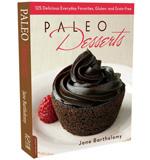

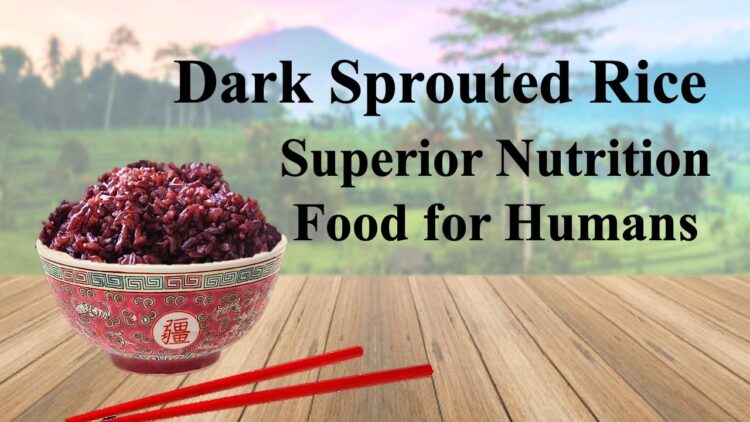

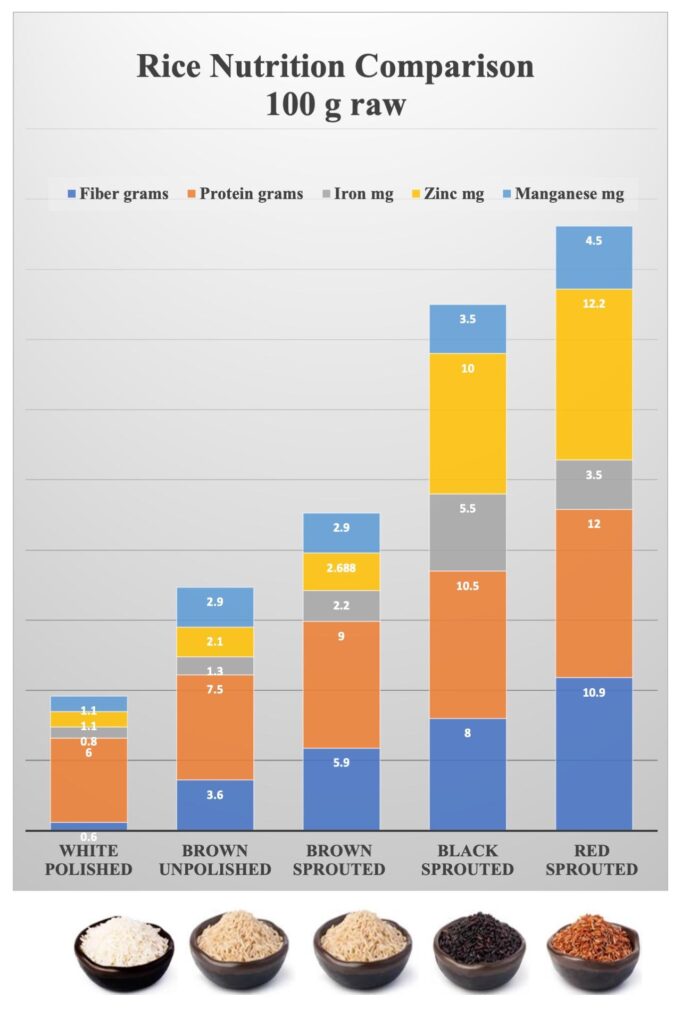
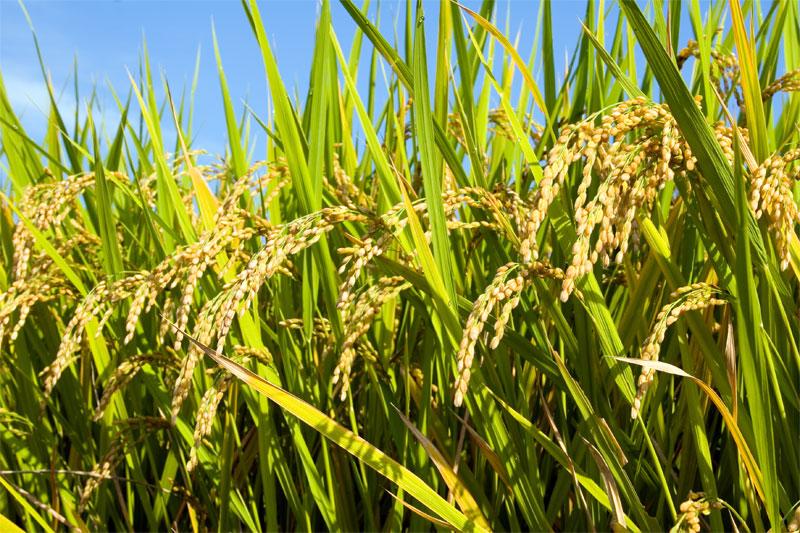
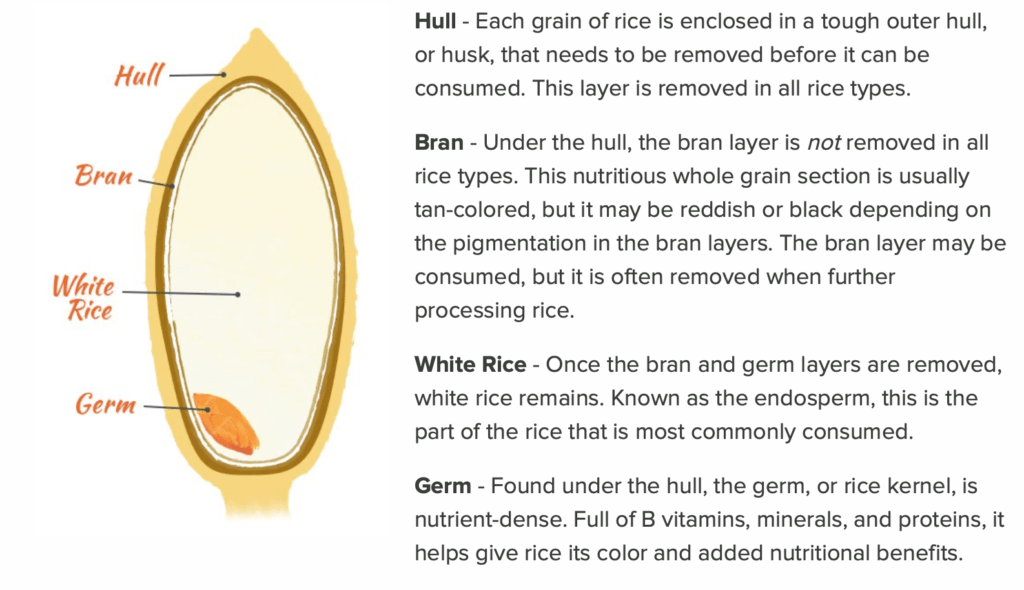
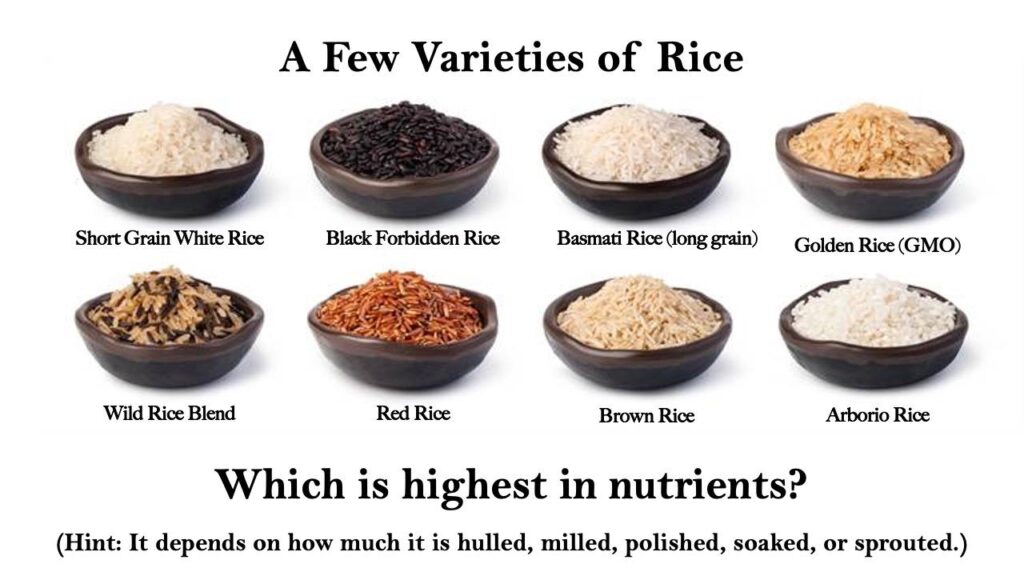
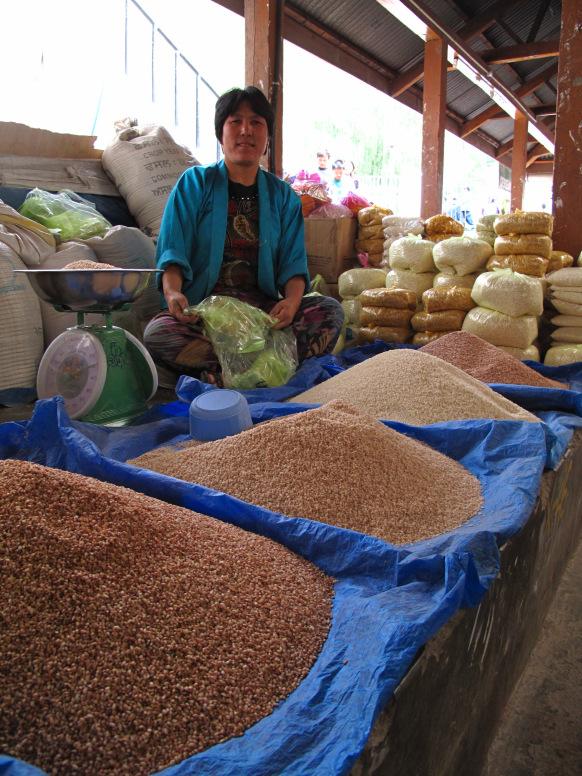


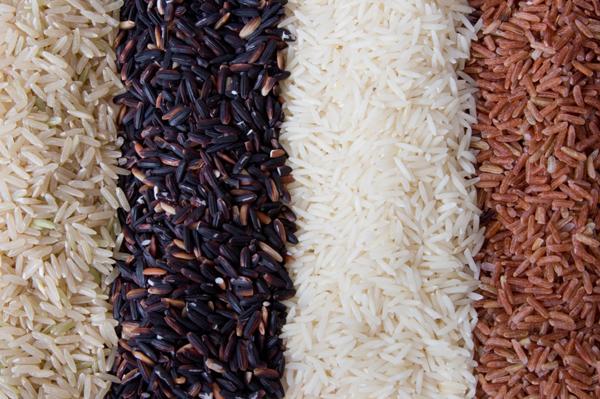

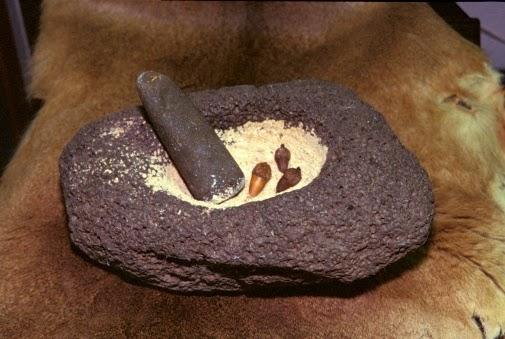

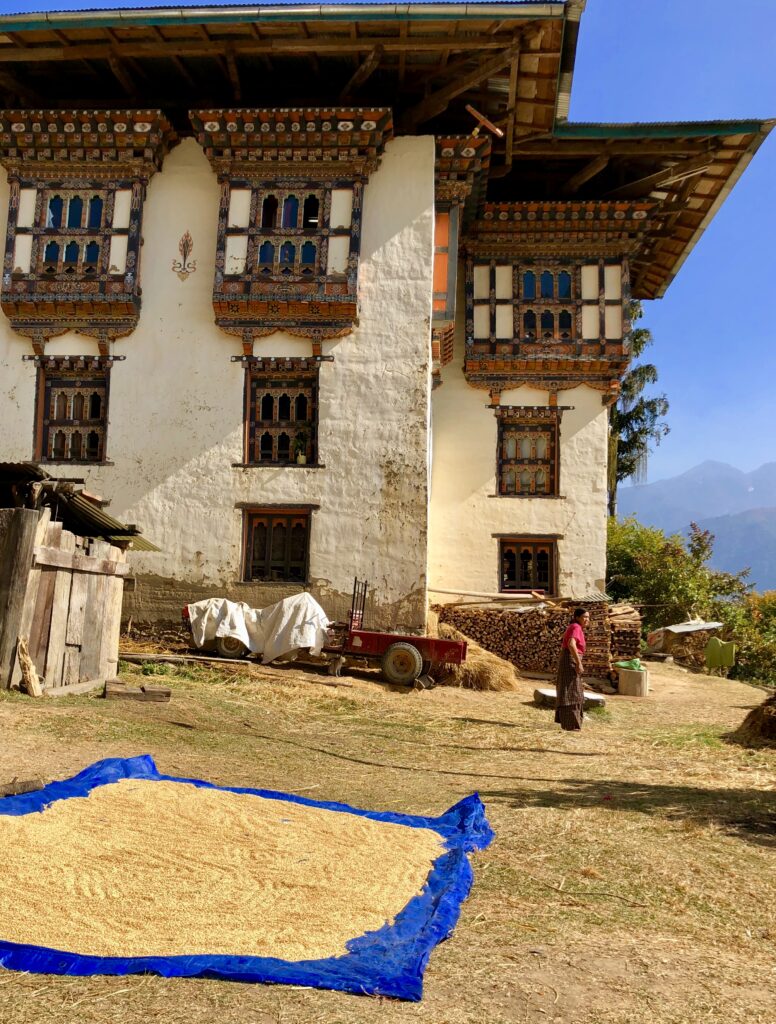
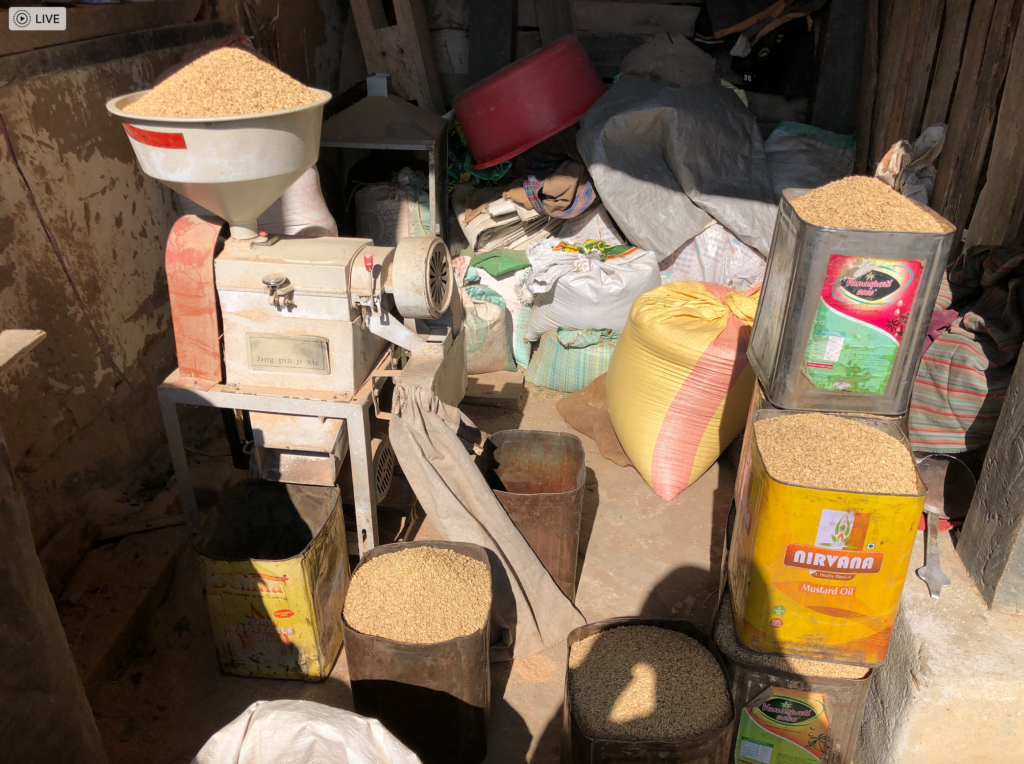
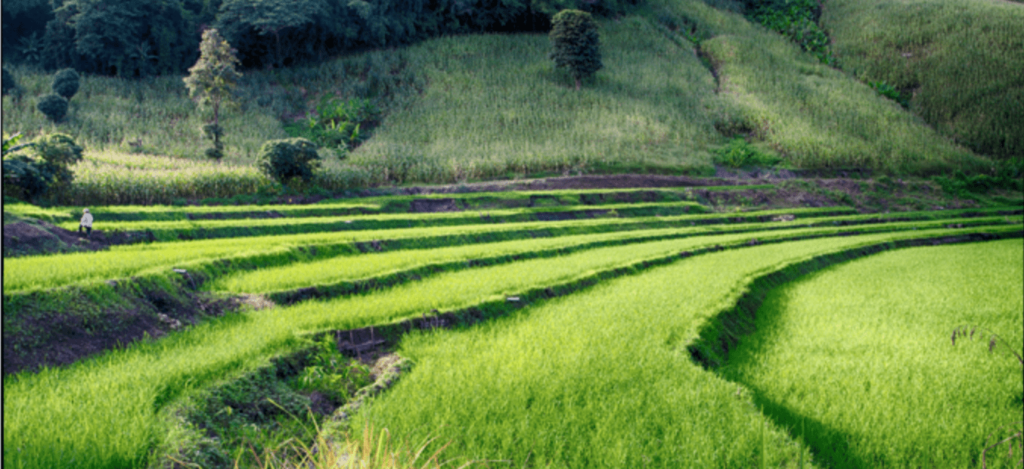
4 Replies to "Dark Sprouted Rice, Superior Nutrition! It's all about the MINERALS!"
Teri O' January 30, 2025 (4:43 am)
Good morning Jane,
Thank you for the excellent and well researched article on rice and its benefits. I always enjoy
reading your topics––unlike the click-bait that’s out there, one doesn’t have to wade through tedious stories of how one made a ‘discovery’ then did ‘research’ and put together a ‘team of scientists’ to create a ‘life-changing products which takes only 10 seconds’ to resolve whatever the
problem may be! You get right to the point. Thank you!! I also am impressed by the diversity of great information––now if I could just get my rosemary to “overwinter” in my house…it is not looking well at all and though it gets plenty of sun, attention with a spray mist, and a humidifier is churning out 42% it is still not happy and is rapidly drying up… Perhaps I should just move to Spain!
Jane Barthelemy February 2, 2025 (5:58 am)
Hello Teri O’. Thank you so much for your kind words. I really appreciate you. Have you tried talking to your rosemary? Usually this is a friarly hardy plant. Maybe it just needs a bit of loving personal attention. Blessings to you! Jane
Mary Barthelemy May 16, 2024 (2:10 am)
????
Jane Barthelemy May 16, 2024 (3:50 am)
Hello Mary, thank you for your comment. I’m here, still pressing my nose to the grindstone.
Maybe a couple more days and I’ll be finished.
Love J